A Journey through the Kunama Culture.
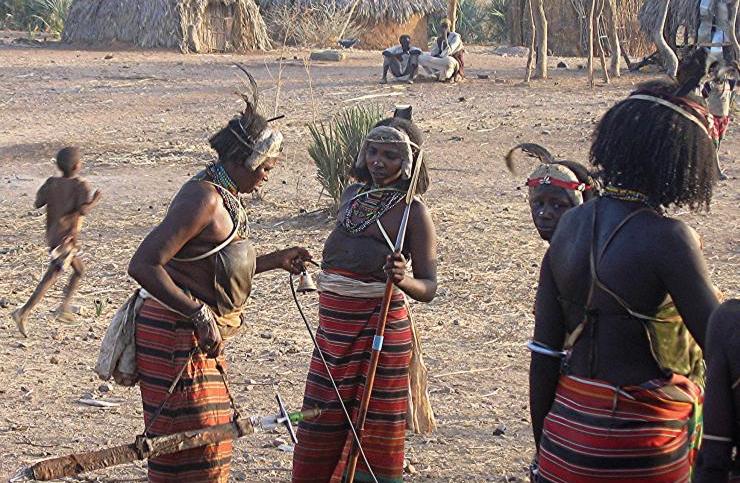
The Kunama ethnic group resides mainly in the Gash-Barka region of Eritrea, between the Gash and Setit rivers, in the western and north-western regions of Tigray and in small areas of Sudan. There are an estimated 260,000 Kunama, most of whom live in Eritrea. They represent about 2% of the Eritrean population.
The history of the Kunama is largely unknown. Most of what is known has been passed down through oral traditions. These oral traditions indicate that the Kunama lived in Axum and surrounding areas as nomads. A king named Baden or Bazen and his wife Kuname ruled Axum around 8 BC. and nomads began to consider themselves and call themselves Kunama only during their rule.
Many Kunama believe they originated from King Baden (Bazen) and call themselves Kunama after his wife. Under the reign of King Baden (Bazen) and the Kunama, a common identity began to form among the Kunama.
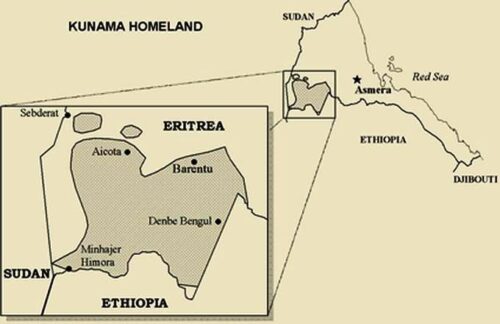
According to tradition, when the king died in battle, neighbouring peoples killed many Kunama and pushed the Kunama from the Axum area to northern and north-western Tigray. Some Kunama crossed the Mereb River and migrated to present-day Eritrea, while others remained in Tigray.Others argue that the Kunama are a Nilotic ethnic group and that they originated on the border between Ethiopia and Sudan before migrating and settling in Tigray and Eritrea.
One of the earliest written records of the Kunama comes from an Arab traveller who visited Alwa (near Khartoum, Sudan) in AD 872. He mentioned that the ‘Barya’ and ‘Cunama’ tribes lived on the borders of the Kingdom of Alwa (now Sudan central and southern).
A 10th-century Arab geographer, Ibn Hawqal, wrote that the Kunama lived in the Baraka Valley in Eritrea.
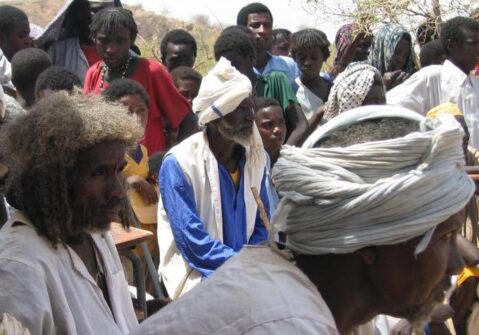
One of the earliest written records of the Kunama comes from an Arab traveller who visited Alwa (near Khartoum, Sudan) in AD 872.
Many gaps have been filled in by using myths and legends. After the flood, one of them says, Ham, one of Noah’s sons, crossed the land of Egypt with his family and settled in the Eritrean highlands. Many scholars consider them to be the first colonizers of this part of Africa, even before the populations who came from Arabia or Yemen after crossing the warm waters of the Red Sea.
Matrilineal society
The Kunama language belongs to the Nilo-Saharan language family. The Kunama are a matrilineal society. They are a people devoted almost exclusively to agriculture. Kina or sorghum is the most traditional crop, along with burta, a cereal similar to millet, and also of great importance to livestock farming. This interest in breeding has its roots in tradition. Livestock and its products (milk and butter) were and are their greatest wealth, their well-being, and their very life. And it is perhaps for this reason that even today, in language, in etiquette (greetings and good wishes) and in tribal rites, the Kunama people gladly have recourse to ausa (milk), elevating it to a symbol of all good and prosperity, and, in the celebrations that they accompany its existence from birth to death, to the source of the ausa, that is, to the breasts (cuta).
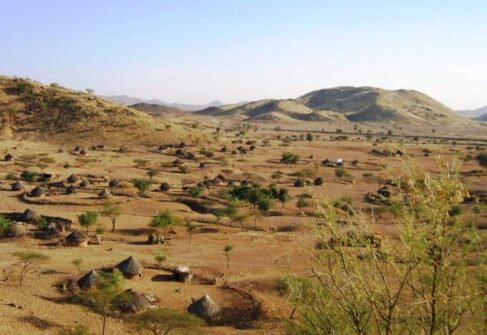
The Kunama ethnic group resides mainly in the Gash-Barka region of Eritrea.
Some Kunama expressions of greetings or good wishes are worth noting: Ausa-si goda (literally: sit in milk), take care; Ausa-si gada (go into the milk), have a good trip; Ausa-si ningida (sleep in milk), good night; Ausa-si feda (wake up in milk), good morning; Ausa-si (in milk), wishes for all good things; Ausabarakata (milk and blessing), all good and happiness; Ausa-nasoke (I give you, I wish you milk), wish of wealth (it is the blessing of the elderly).
Formulas and ceremonies indicating the source of the milk – that is, the udder – return, as mentioned above, also in the celebration of some very important rites for the existence of the Kunama, so much so as to give life to two extremely significant expressions: Aira-cuta (udder of the cow) and Lasha-cuta (udder of the goat). Two expressions, among other things, which give a very particular imprint to the various ceremonies. And, to use one or the other, one must belong to one of the lineages or clans on which the social life of the tribe is organized: namely, Serma, Gumma, Shua, or Karawa.
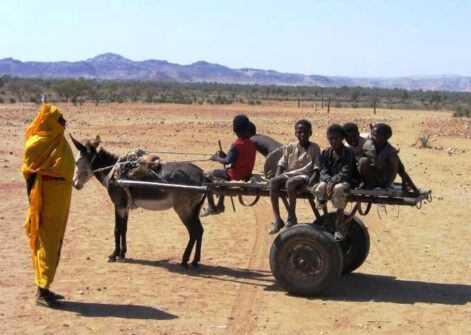
The Serma and Gumma have the aira-cuta as their distinctive feature and in the celebrations of the various ceremonies, they perform or, rather, repeat certain gestures four times, because the cow’s udder has four teats. The Shua and the Karawa have lasha-cuta as their distinctive feature and in the ceremonies, they repeat certain gestures twice, since the goat has only two nipples.
According to the Kunama, the traditional rites of aira-cuta and lasha-cuta essentially represent means available to the Kunama man to ward off the various ailments that surround him. Their celebration, in fact, seals the nine most significant circumstances of an individual’s existence: birth, circumcision, initiation, engagement, marriage, childbirth out of wedlock, illness, death, and revenge against an enemy.
Four great families
The Kunama are divided into four great families: the Shua, the rhino tribe; the Gurma, the tribe of elephants; the Caraua, the tribe of the moon; and the Serma, the buffalo tribe. These four groups live indistinctly mixed, but each Kunama knows from childhood to which family or group he belongs. In some areas, they are even distinguished by the way they build their huts or the way they comb their hair. Thus, the Serma finish the construction of their huts with two raised horns, while the Gurma finish their huts with a tip bent like an elephant’s trunk.
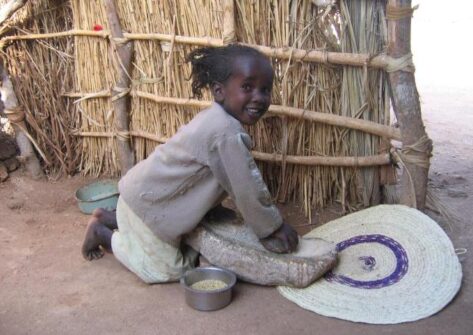
Some of these groups maintain a special relationship with a particular group. The Serma and the Gurma, for example, are related to each other through marriages, while the Caraua are related to the Shua. Although the first two are perhaps more numerous, the latter two enjoy greater influence within the tribe, as the Sanganena or chief judge of the tribe belongs to the great Caraua family.
Being a matriarchal tribe, they enter one of these four families through their motherhood. Even if the father belongs to a particular group or family, the children belong to the mother’s family group. They explain this reality with this saying: ‘The earth (the mother) gave birth to a tree; the tree raised his arms to heaven (the father), but the earth grabbed him by the feet and said: ‘the children belong to the mother’ ‘.
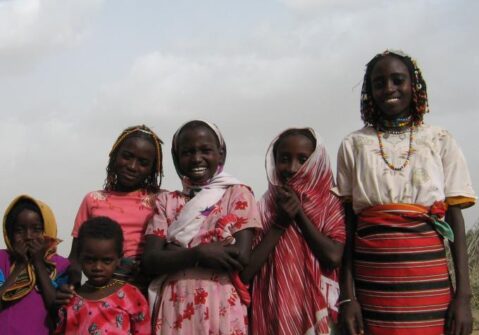
The Kunama are a matrilineal society.
These main clans are then divided into sub-clans (formed by locality). From a geographical point of view, a different division can be proposed, but not everyone agrees on the number of groups that deserve this distinction. The Aymasa live in the homonymous plain, west of Barentu, the capital of the Gash-Barka region. This first group shows a strong Sudanese influence. The Barka or River People live in the Gash basin to the southwest. They have their epicentre in Fode; in addition to being the largest group, they are the ones that retain the purest language. The Tika, which literally means south, live on the banks of this river, from which they take their name. The Marda or Itana live north-east of Barentu. The Taguda or Tauda are a small group bordering the Aymasa. The Sokodas live in the Guluyi or Afir area. The Anal form a wedge between the Barka and the Tica. The Sasal live in the area between Ugaro, Guluyi and Aimasa. Finally, the Ilit (tamarind) and Bitama (new water) live not far from the city of Haikota. (A.F.M.)



